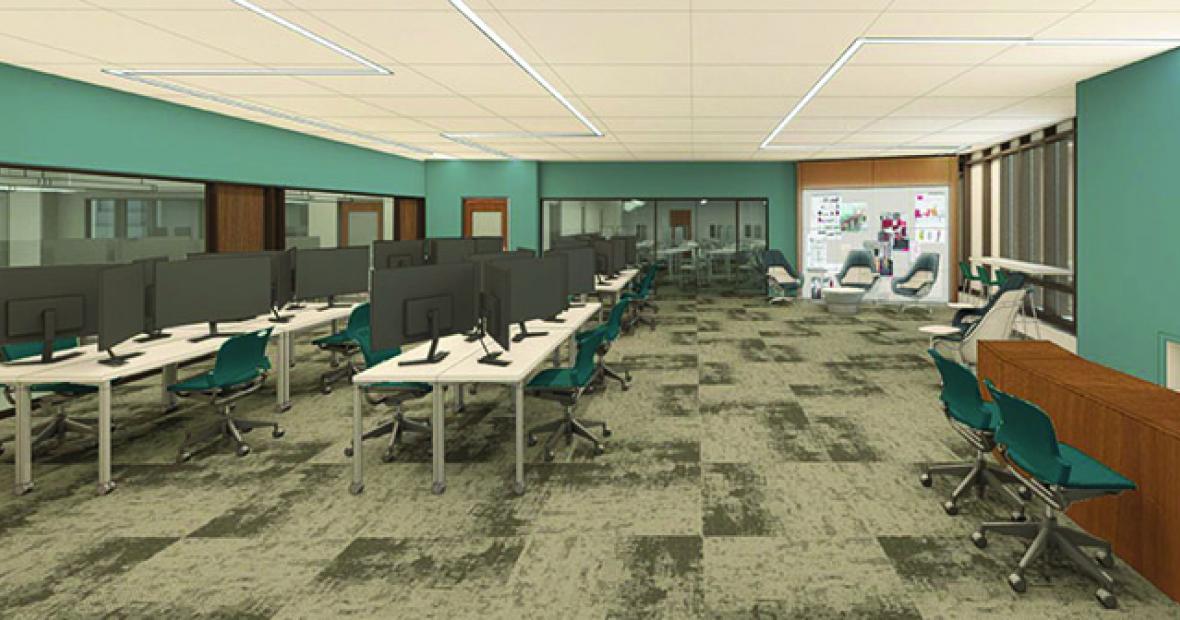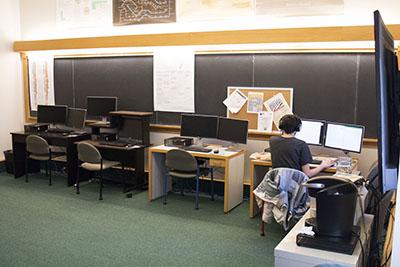Growth in Data Analysis Space Leads to Growth of Capabilities
Data — from a single digit to terabytes of information — increasingly shapes decisions on public policy to the way we individually go about our daily lives. To some this is exciting; to others, intimidating.
The Data Analysis and Social Inquiry Lab (DASIL) helps students and faculty members integrate data analysis into both classroom work and research by facilitating workshops, helping students collect and analyze data, and offering software training and data-set preparation.
“Since the fall of 2017, DASIL has been active in providing services to over 170 clients, including students and faculty,” says Xavier Escandell, associate professor of anthropology and faculty director for DASIL. “We have also successfully continued our support of the institution at large.”
The current DASIL space, on the first floor of ARH, consists of six desktop computers, a table for collaboration, and blackboards covered with posters on color theory and notes from previous projects. It suits DASIL’s needs — for now. Upon completion of the new Humanities and Social Studies Center (HSSC), the lab will move there. When it does, those six workstations will become 16. The single table will be replaced by three rooms optimally configured for breakout collaborative work. And a quantitative computer lab that seats 28 will also serve as a space to demonstrate the capabilities of the suite of software at their disposal.
The most exciting new technology, according to Escandell, is the potential to invest in a digital table that will allow users to visually interact with their data and see in real time how changes to data will affect overall outcomes.
Under Escandell’s guidance, DASIL has continued expanding its interdisciplinary focus, collaborating with a variety of entities and other initiatives on campus, including:
- assisting the Digital Bridges for Humanistic Inquiry Project.
- collaborating with the Center for Careers, Life, and Service on a data visualization on internships and first destinations after college.
“What I want people to realize is how much opportunity for individualized assistance we will have,” says Escandell. “Students will be able to congregate in the lab and use it for their own work. Or they can use the rooms for group projects. And if they need help, there will be someone to assist or mentor them.”
The lab is currently organized around a student mentor model geared toward addressing pedagogical needs. But as the program grows, Escandell is working toward a more research-oriented approach, where faculty members are paired with DASIL students to support their research needs.
"Our students are partners in research activities, but they are also often logistic support in the relationship between a faculty member and other students, for classroom-related activities, but also for research,” says Escandell.
In less than a year, DASIL will relocate to a new space specifically designed for data analysis and collaboration. For students, faculty, and staff — whatever their views on data — the move is very exciting.


